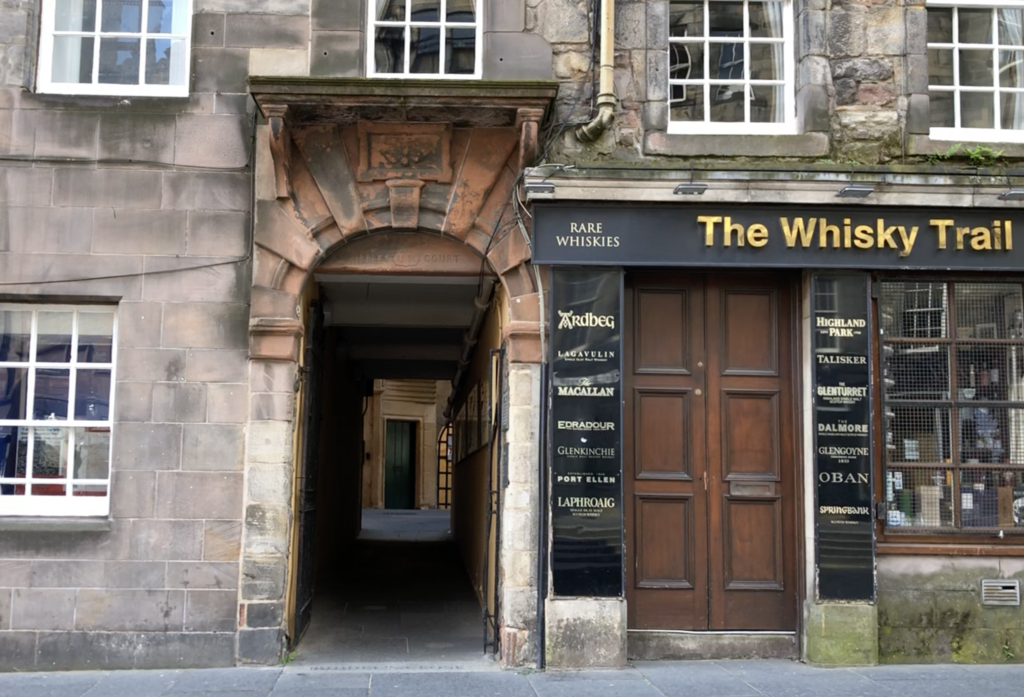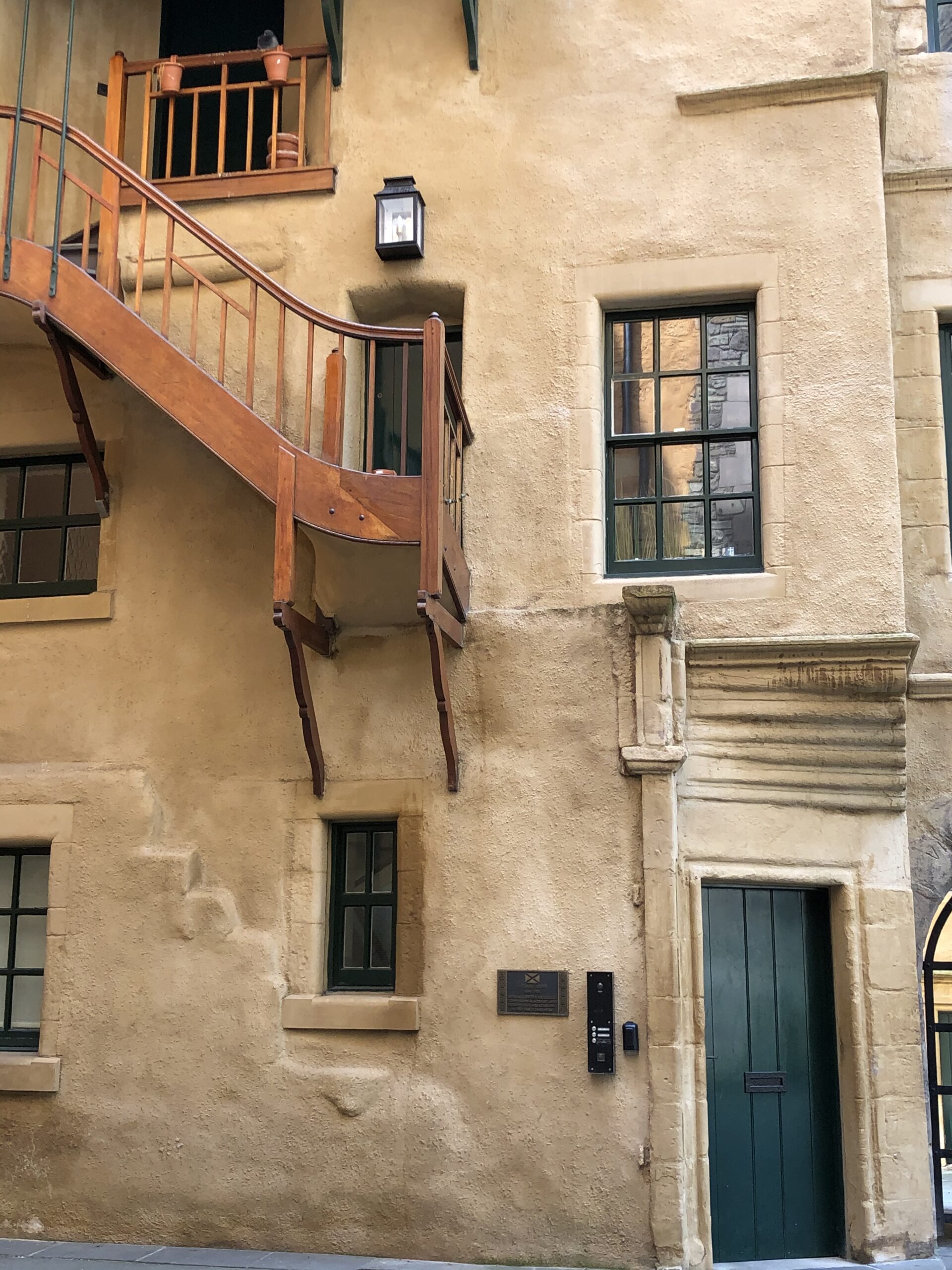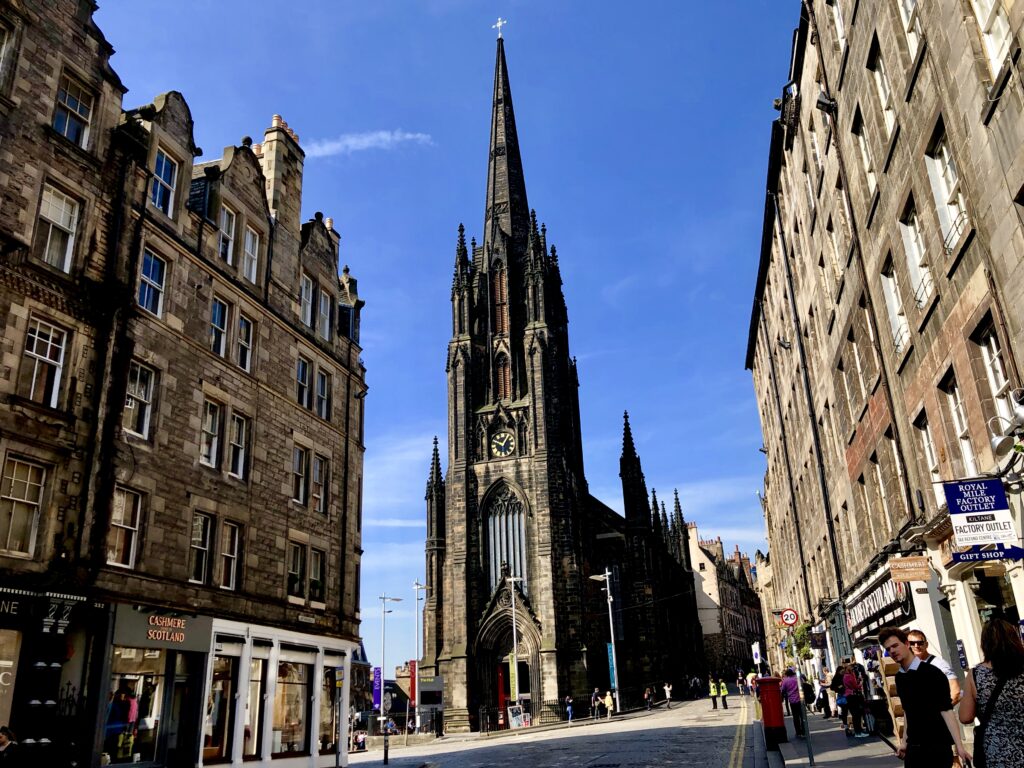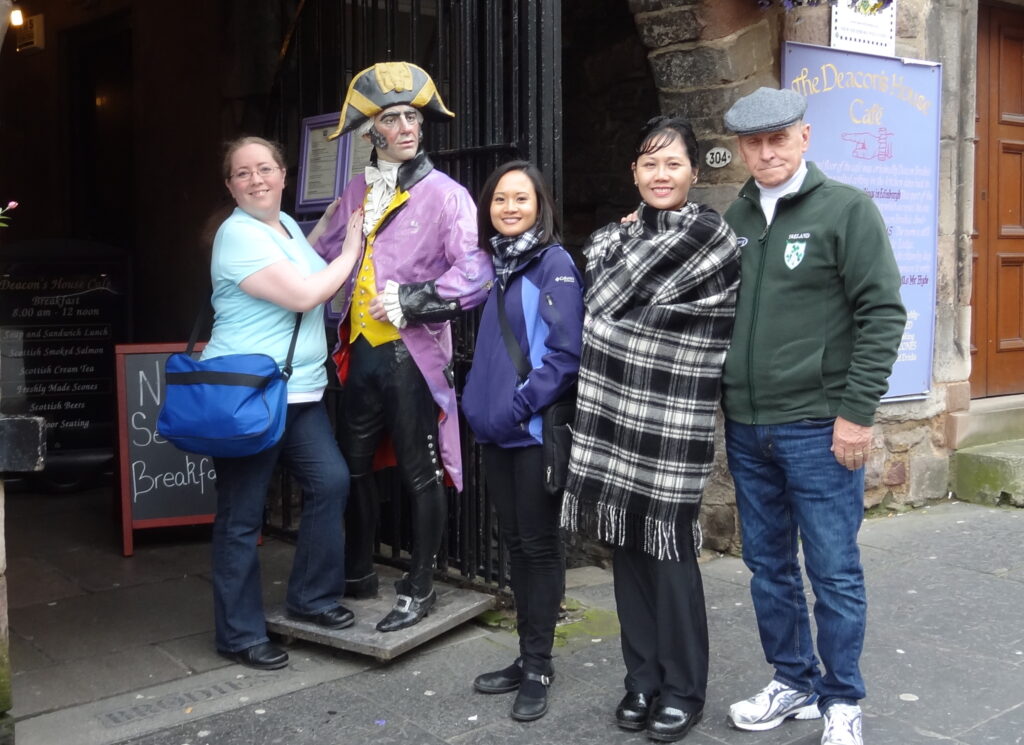Riddle’s Court
Anyone visiting Edinburgh will automatically be drawn to visiting iconic locations such as Edinburgh Castle. If you want to avoid the crowds, however, take a stroll 400 metres down the Royal Mile to Riddle’s Court. There you will find a true historic jewel in Edinburgh’s crown.
This short video gives you a little taster of why you should visit Riddle’s Court.
Why visit Riddle’s Court
So why would we encourage you to visit Riddle’s Court? Well there are a whole host of reasons but let’s start with the fact that it was built in the 1590s. It’s first owner was Baillie John McMorran who was a wealthy merchant in the city. He purchased it in 1587 but with his considerable wealth he was able to create a stunning courtyard residence.
Baillie McMorran was only to benefit from the property for five years. Unfortunately for him in 1595 he was called to a riot by schoolboys at the Royal High School. The pupils had effectively gone on strike in protest at not being given enough holiday time. McMorran was called to bring the riot to an end. However, one of the pupils was in possession of a musket and remarkably fired an accurate shot that killed McMorran. The perpetrator, William Sinclair of the highly influential Sinclair family, was cleared and incredibly avoided prison.
The property in the meantime changed hands and it received a number of visitors over the years. The most notable visitor would have to be King James VI who hosted a banquet there in honour of his wife’s brother who was visiting.
During the 1600s, whilst in the possession of the Sir Roderick Mackenzie a number of upgrades were carried out. An ornate plaster ceiling was added in 1684 which has survived to this day.
The property acquired its name when it was purchased by George Riddell in 1726. Again like Mackenzie, thanks to his considerable wealth, he was able to reconstruct much of the people that faces onto the Lawnmarket.
However, in 1837 the rerouting of the link road between the Grassmarket and the Royal Mile resulted in some very serious remodelling of the south face of Riddle’s Court. By the mid to late 1800s, Riddle’s Court was a shadow of its former self. The 1881 census records that there were 247 people living in the building. But this was far too overcrowded and like many other parts of the Old Town the building had become a slum.
Patrick Geddes – A Man of Vision
If it were not for one man, Patrick Geddes, like many other buildings that had fallen into disrepair it would have been demolished. Geddes was a man of vision and well ahead of his time. He can truly be described as a conservationist, long before it became fashionable to be one.

Geddes purchased the property and carried out a “root and branch” restoration of the building. By the time it was completed, it became one of the first Halls of Residence for students at the University of Edinburgh. Some buildings had to be demolished either side of the passageway to form a courtyard. The aim was to provide more light and fresh air into the building and improve the conditions for the inhabitants.
A new staircase was added to the outside of the building to enable access between the first and second floors. This can be seen more clearly in the video. Geddes held the first University Summer schools here. The entrance to what is now the Geddes Centre has an inscription on the lintel above the gated entrance – ‘Vivendo Discimus.’ This is the Latin for ‘By Living we Learn.’
Further limited restoration was carried out in the twentieth century after it was taken into the care of Edinburgh City Council. However, huge investment was needed to carry out the thorough restoration that it truly required.
Thanks to the Heritage Lottery Fund grant of £2.4 million and further total funding of £5.8 million, the Scottish Historic Buildings Trust was able to commence a stunning restoration. The restoration commenced in 2016, using only the most skilled tradesmen in their field. The project was finally completed in 2019.
Riddle’s Court is Open to the Public
It is now open to the public. As well as being able to take a tour, it can also be booked for educational events, weddings, corporate events, parties and fine dining. For further details, visit Riddle’s Court website.
Riddle’s Court can be easily missed as it is set back from the main thoroughfare of the Lawnmarket. It is almost directly opposite the more prominent Gladstone’s Land. So use that as your point of reference. Here is an image of the entrance to Riddle’s Court from the Lawnmarket.





